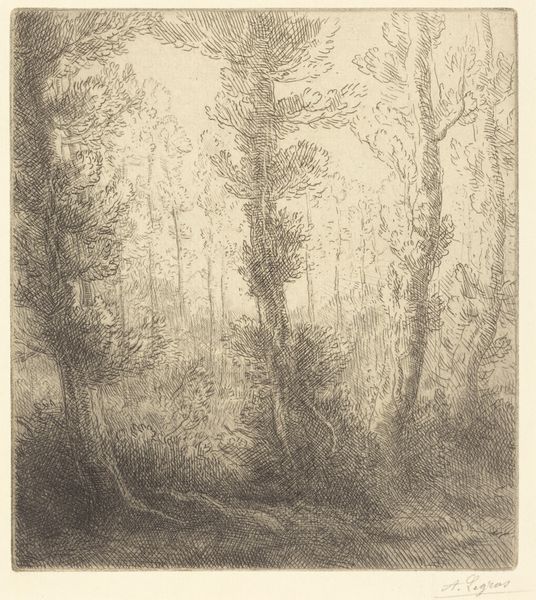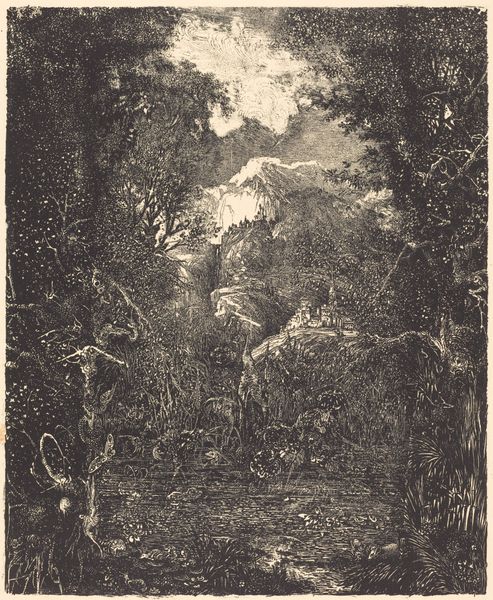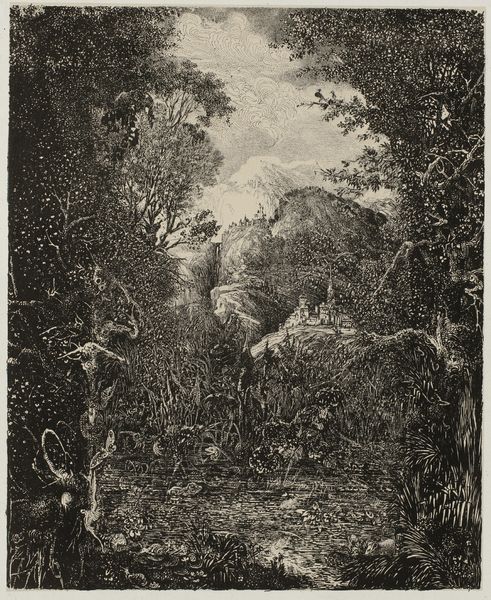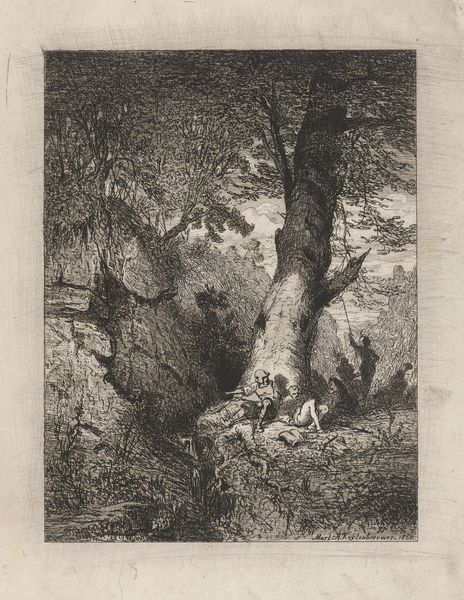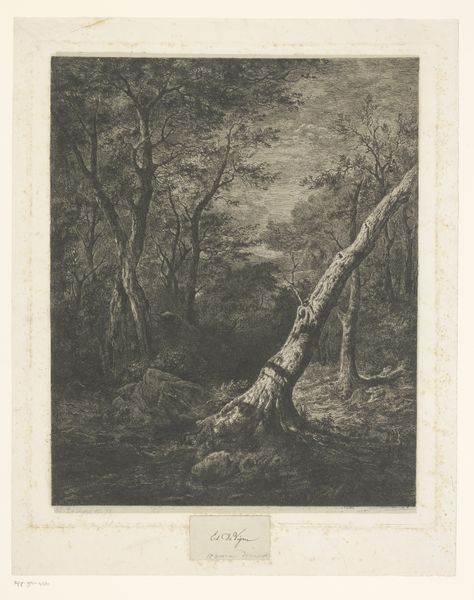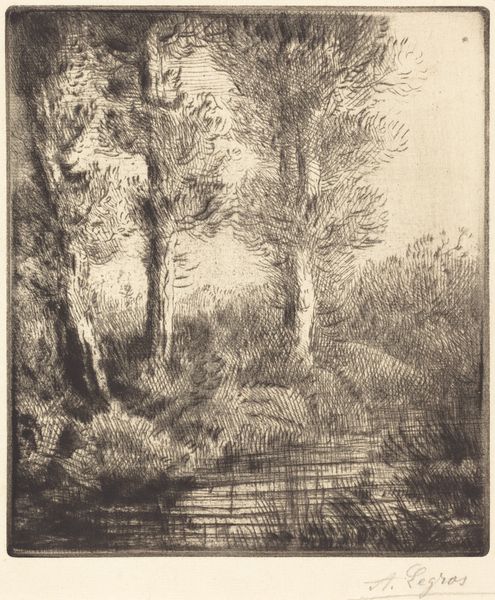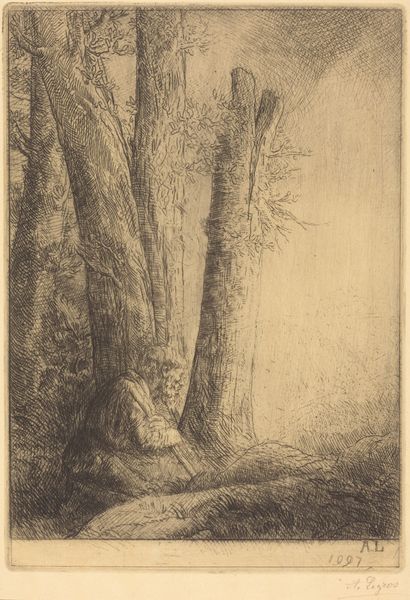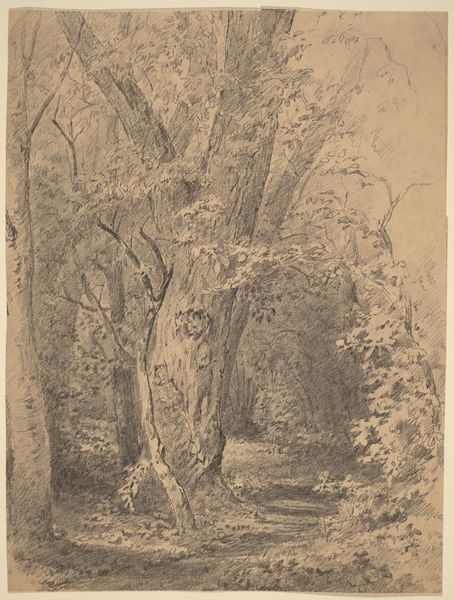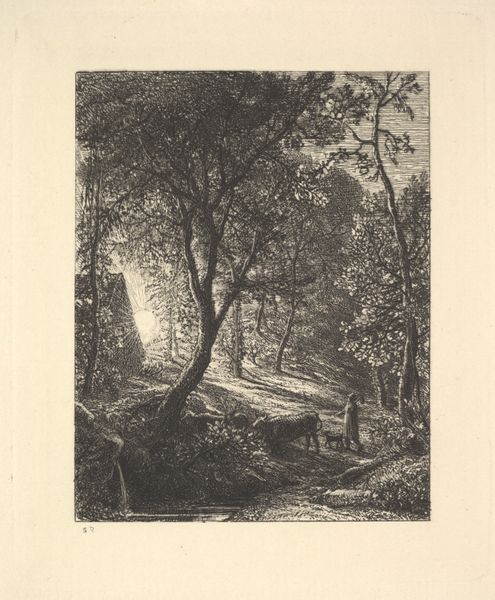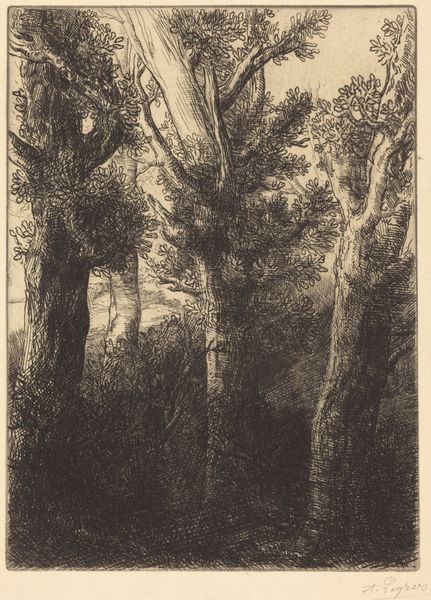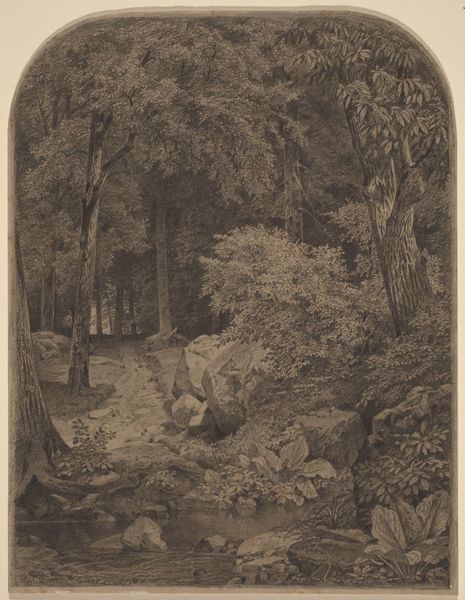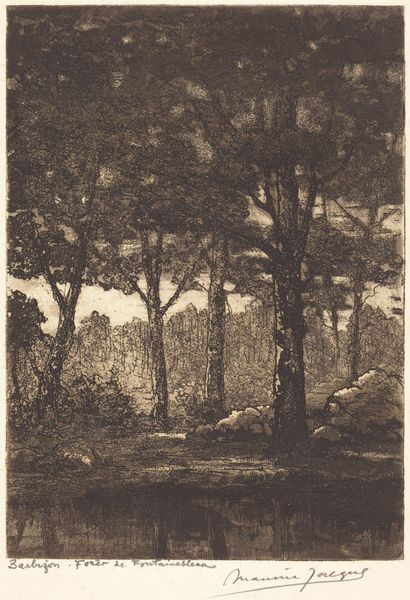
drawing, print, etching
#
tree
#
drawing
# print
#
etching
#
landscape
#
figuration
Dimensions: Image: 10 in. × 7 3/4 in. (25.4 × 19.7 cm) Plate: 11 1/2 × 8 3/4 in. (29.2 × 22.2 cm) Sheet: 12 7/8 × 9 1/2 in. (32.7 × 24.1 cm)
Copyright: Public Domain
Editor: This is Charles-François Daubigny's etching, "Shepherd and Shepherdess," from 1874. It feels so idyllic, almost nostalgic. All those sheep, shaded by a thicket of trees... What do you see in it? Curator: Beyond the surface tranquility, I see Daubigny subtly critiquing the romanticized view of rural life. Consider the historical context: 1874, amidst rapid industrialization in France. Editor: So, you’re saying there's more to it than meets the eye? Curator: Precisely. The figures are almost swallowed by the landscape, rendered in shadow. Isn't it possible that they're reflecting the plight of rural populations displaced by economic shifts? And Daubigny highlights the changing economic structure which creates class structures still felt today. Editor: That’s interesting. I was so focused on the peacefulness, I missed the potential commentary on social inequality. Curator: The artistic technique plays into this, too. Etching, a printmaking technique, democratized artmaking by enabling mass production, something photography had just begun doing at the time. Who had access to Daubigny's view of rural life at this time and what could they do about it? Editor: That’s true; the original likely had political implications beyond the artwork itself. So much to unpack! Curator: Exactly. By considering these intertwined issues, we come to recognize the complexities of an artistic work, seeing it for far more than its pleasing imagery. Editor: I never would have looked at it that way without this discussion! Now, it’s not just a pretty landscape; it’s a snapshot of a changing world.
Comments
No comments
Be the first to comment and join the conversation on the ultimate creative platform.

